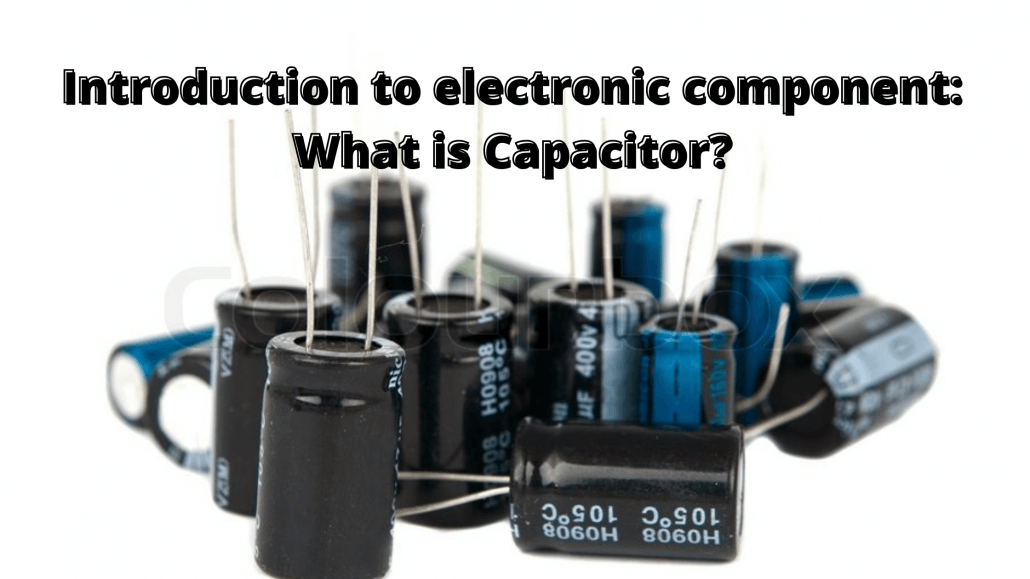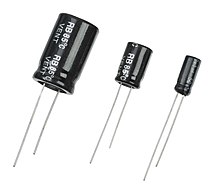Introduction to electronic component: What is Capacitor?
Ever wondered where can you find the itty bitty capacitor? Well, If you were to pay close attention to your surroundings, you’d actually realise its everywhere! From your televisions to the clouds above your head!

In this article, we will be tackling everything about capacitor! However, before we dive right into it, let’s recap these key concepts to help you better understand capacitor:
- Electricity: The movement of positive and negatively charged particles.
- Voltage: The difference in charge between the two points.
- Current: The flow of electrical charges.
- Resistance: The measure of opposition to the flow of current.
- Resistors: A passive two-terminal electrical component that implements electrical resistance as a circuit element.
Should you want to recap or learn more about these concepts, check out the following blogs:
- What happens in an electric circuit: Voltage vs Current
- Basic Electronics: Alternating Current(AC) vs Direct Current(DC)
- Types of Resistor and How to Color Decode them
- Resistors: Pull-up and pull-down resistors
With that being said, let’s move on to what will be covered today:
- Overview of Capacitor
- Relationships and Calculations
- Capacitor in circuits
- Applications of Capacitor
- Projects with Capacitor
Overview of Capacitor
What is a Capacitor?
Capacitors, also known as condensers, are devices that store electrical energy in an electric field. To put simply, capacitors are made by taking 2 conductors and place an insulator between the conductors. Thus, the ability to store energy is what makes capacitors unique. They are also one of the fundamental passive components.

They are somewhat like a battery, but they function differently. The battery releases electrical energy at a slower rate than a capacitor does. The capacitor is capable of releasing all its energy in a split second. But the terms of charging and discharging is the same for both battery and capacitor.
How does a capacitor work?
In order to understand how a capacitor works, you will have to know that a capacitor is made out of 2 metallic plates (conductors), with a dielectric (insulator) material in between.

When you apply a voltage through the two plates, an electric field is created. As you can see from the diagram above, the positive charge will collect on one plate and negative charge on the other plate.
What is Capacitance?
Capacitance is defined as being that a capacitor has the capacitance of One Farad when a charge of One Coulomb is stored on the plates by a voltage of one volt.
Capacitance refers to the amount of electrical energy a capacitor can store. This basically means the bigger the capacitance, the more amount of electricity the capacitor can store.
Capacitance is measured in units called farads (F), named after the English electrical pioneer Michael Faraday (1791–1867). However, do note that the unit farads is very large, so sub-multiples of farad is often used:
Standard Units of Capacitance
Microfarad (μF) 1μF = 1/1,000,000 = 0.000001 = 10-6 F
Nanofarad (nF) 1nF = 1/1,000,000,000 = 0.000000001 = 10-9 F
Picofarad (pF) 1pF = 1/1,000,000,000,000 = 0.000000000001 = 10-12 F
Types of capacitor
There are a lot of capacitors out there for different uses, but here are some factors that affect how they function:
- Size
- Tolerance: capacitor can’t actually be measured for their actual amount of capacitance, thus the exact value might vary anywhere from ±1% to ±20% of the desired value.
- Leakage voltage
- Equivalent series resistance (ESR): The plates aren’t totally conductive so there is still resistance.
- Maximum voltage
Electrolytic Capacitor

- Used when large capacitor values are required.
- The thin metal film layer is used for one electrode and for the second electrode (cathode) a semi-liquid electrolyte solution which is in jelly or paste is used.
- Generally used in the DC power supply circuit as they are large in capacitance and small in reducing the ripple voltage.
Paper Capacitor

- As the name suggests, the paper capacitor is made by sandwiching thin foils and papers.
- Nowadays plastic is used in replacement of paper or oiled paper.
- Generally used in radio during the early days, not as commonly used anymore but can still be seen in electronic equipment.
Mica Capacitor

- Mica is a naturally occurring transparent substance that flakes off in thin sheets.
- There are two types of Mica capacitor: clamped capacitors and silver mica capacitor.
- Generally seen in radio receivers and radio transmitters.
Ceramic Capacitor

- Utilizes ceramic/porcelain material as a dielectric.
- One of the first materials to use in the production of capacitors as an insulator.
- A ceramic capacitor is like a mica capacitor, which has low loss, and therefore high in terms of efficiency.
There are so many more types of capacitors out there, but the listed ones are more well-known and commonly used.
Relationships and Calculations
We mentioned capacitance earlier just now, so we will learn about the relationship between charge, capacitance, and voltage. Their relationship could be shown with this formula:

Where the Charge (Q) stored in a capacitor is the product of its capacitance (C) and the voltage (V) applied to it.
From the different types of capacitor we saw just now, there’s a variety of materials used to make a capacitor. And each material affects the total capacitance of a capacitor, to calculate that we can use this equation:

Here is a graph that shows how different dielectric materials’ relative permittivity:

Let’s look at an example of how to calculate the capacitance of a Parallel Plate Capacitor:
The question is: A capacitor is constructed from two conductive metal plates 30cm x 50cm which are spaced 6mm apart from each other, and uses dry air as its only dielectric material. Given that 8.84 x 10-12 Farads per metre is the permittivity of a vacuum, Calculate the capacitance of the capacitor.
To do that you only need to utilize the formula:
Capacitor in Circuits
Capacitors are found in many circuits, the diagram below is a basic circuit that illustrates the amount of voltage deposited onto the plates:

Capacitors are found in both parallel and series circuits, let’s look at their schematic circuits to understand better.
Capacitors in series

As you can see, the capacitors each store instantaneous charge build-up equal to that of every other capacitor in the series. Thus, the total voltage difference from end to end is apportioned to each capacitor according to the inverse of its capacitance. The method to calculate the total capacitance would be:

Capacitors in parallel

As we know, the capacitors in a parallel setting each have the same applied voltage. Thus, Charge is apportioned among them by size. The method to calculate total capacitance would be:

Applications of capacitor
We did mention a few applications of capacitor earlier, and we know that they’re widely used in real life. But here are some of the areas they’re used:
Decoupling Capacitors
A decoupling capacitor is a capacitor used to protect one part of a circuit from the effect of another. It is common to use in between the ground and a power supply.
For instance, to suppress noise or transients. Noise caused by other circuit elements is shunted through the capacitor, reducing the effect they have on the rest of the circuit.

Energy storage
This is pretty much self-explanatory, but it would be used to store electric energy when disconnected from its charging circuit, so it can be used like a temporary battery.
For instance, in-car audio systems, large capacitors store energy for the amplifier to use on-demand.

Projects with Capacitor
There are so much you can do with capacitors, let’s check out some interesting projects!
Disposable Camera Coilgun

Have some old camera lying around? You can use reuse the capacitor and parts! This project shows you how to DIY your very own coilgun if you have some basic soldering skills and electronics knowledge!
What you’ll need:
- Used disposable camera with a flash circuit (look for the capacitor with a circuit board)
- A soldering iron
- Wires
- A plastic ballpoint-pen, ink tube removed so you only keep the hard outer plastic tube.
- A light-switch
- Electrical insulation tape
- Plenty of enamelled magnet wire (ca. 0,5mm diameter)
Sounds appealing to you? Click here for more details!
Remotely Ignite Pyrotechnics

Want to make a detonator that sends sparks flying? This project shows you how to make something that’s low-key dangerous yet exciting!
What you’ll need:
- Steel Wool
- Long 2 conductor wire
- Cellophane wrap
- Tape
- Flash powder or similar
- Capacitors
Ready to try something wonky? Click here to find out more!
Summary
That’s it on capacitors! Did you learn something new? We covered the details on what capacitors do, calculations and exciting projects you can do with it! I hope you’ll be able to understand capacitors better now!

